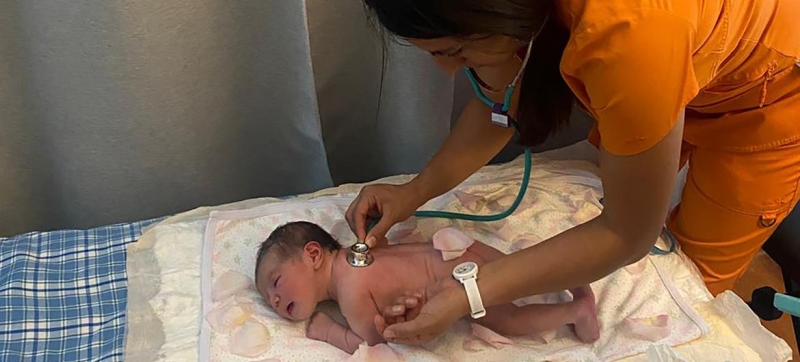- Hadi’s death: Prothom Alo, Daily Star offices set afire |
- সন্ধ্যায় পৌঁছাবে হাদির মরদেহ, জানাজা শনিবার |
- সন্ধ্যায় পৌঁছাবে হাদির মরদেহ, জানাজা শনিবার |
- Hadi is no more, state mourning on Saturday: CA |
- Bangladesh capital market falls; weekly turnover lowest |
Life Expectancy Gap Tops 30 Years: UN Report

Midwife Silvia Ramos checks the health of a newborn in Mexico. Photo courtesy.
A new United Nations report has revealed a staggering global health divide, showing that where a person is born can mean the difference of more than 30 years in life expectancy. The study, published by the World Health Organization (WHO) on Tuesday, underscores the deep and persistent inequalities that continue to shape health outcomes across the globe.
According to the findings, individuals born in the country with the highest average life expectancy can expect to live 33 years longer than those born in the country with the lowest. The report attributes this stark disparity to a complex web of social determinants, including access to safe housing, quality education, decent employment, and basic public services—factors that are still out of reach for millions of people, particularly in low-income nations.
“This report is a stark reminder that our world is deeply unequal,” said WHO Director-General Dr. Tedros Adhanom Ghebreyesus. “Where we are born, grow, live, work and age significantly influences our health and well-being.”
The study highlights how health outcomes follow a social gradient: the poorer the community, the worse the health. These inequities are especially pronounced among populations facing systemic discrimination and marginalisation, such as Indigenous Peoples, who often experience significantly lower life expectancies than non-Indigenous populations—even in wealthier nations.
This latest report is the first of its kind since WHO’s landmark 2008 Commission on Social Determinants of Health, which had outlined ambitious goals for improving global health equity by 2040. However, the new findings suggest that those targets are unlikely to be met. Despite improvements in some areas, the overall gap in health outcomes both between and within countries is not narrowing, and in many cases, is actually growing.
Children are among the hardest hit. The report notes that a child born in a poorer country is 13 times more likely to die before their fifth birthday than a child born in a high-income country. Furthermore, WHO estimates that nearly two million young lives could be saved each year if the health equity gap were closed across low- and middle-income nations.
Progress in maternal health also shows the limits of current efforts. Although maternal mortality has declined by 40 per cent globally between 2000 and 2023, an overwhelming 94 per cent of maternal deaths still occur in low- and lower-middle-income countries—reflecting persistent inequalities in access to healthcare.
In response, WHO is calling for urgent and collective global action to address the root causes of these disparities. The agency recommends significant investments in social infrastructure, the expansion of universal public services, and measures to combat structural discrimination. It also highlights the need to address the health impacts of conflict, emergencies, and forced displacement, which disproportionately affect vulnerable populations.
The report serves as both a warning and a call to action, urging governments, institutions, and global partners to confront the systemic inequities that continue to deny millions the right to a long and healthy life.

